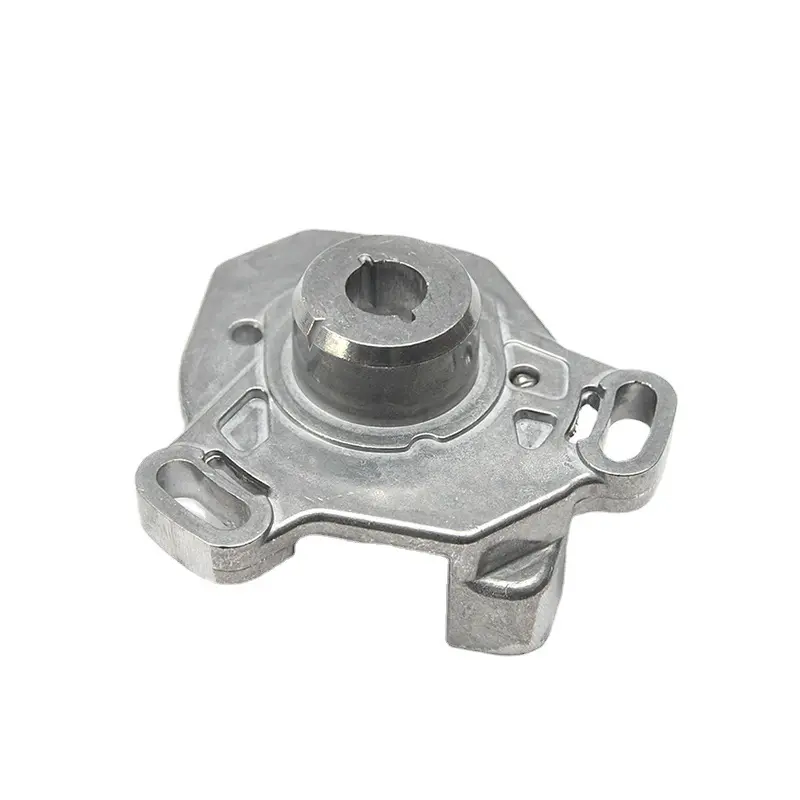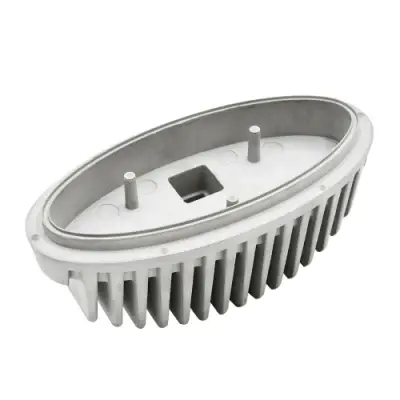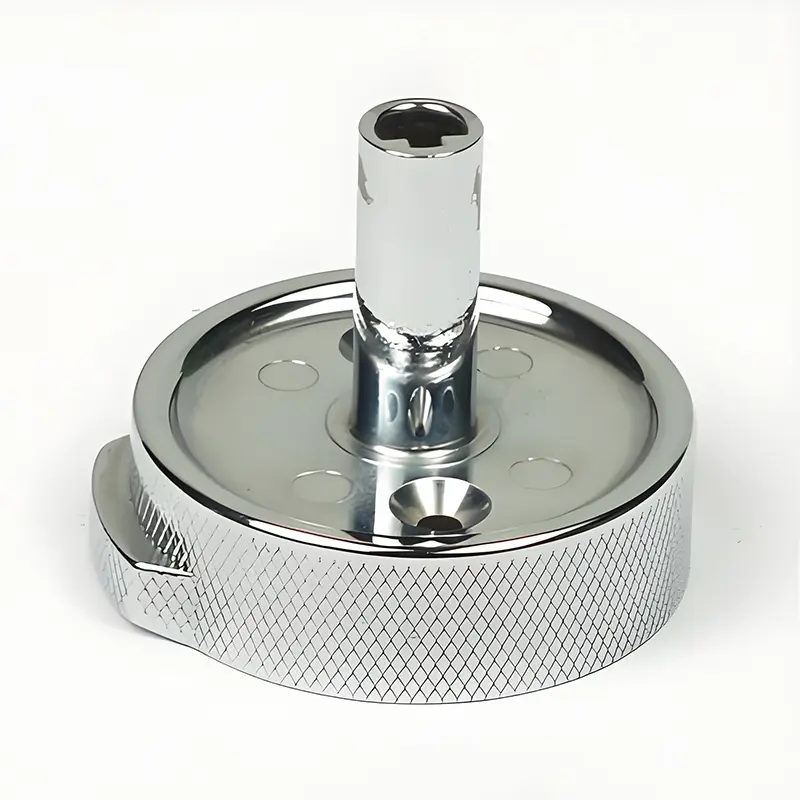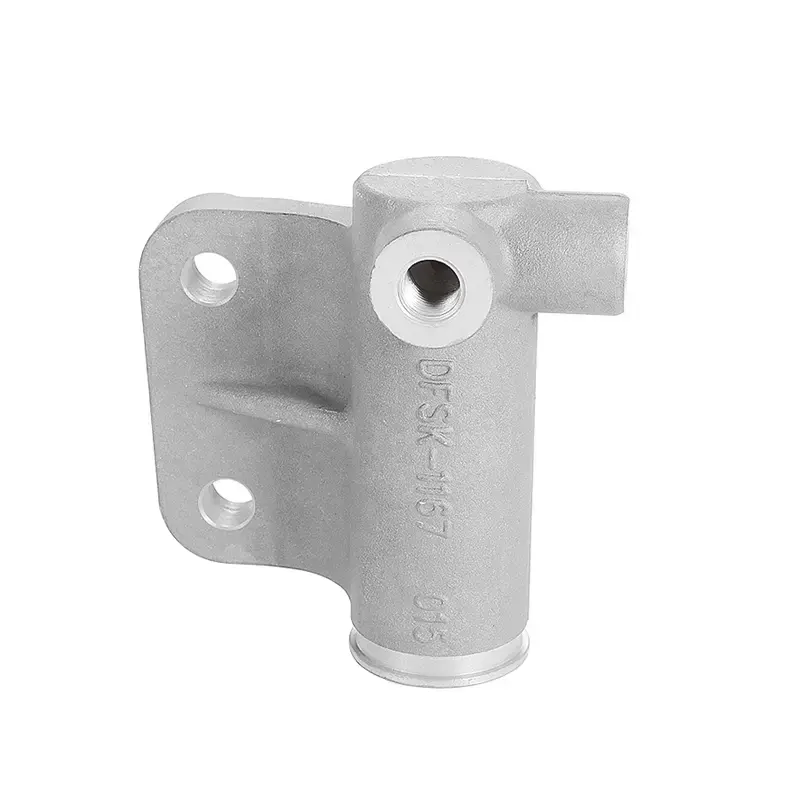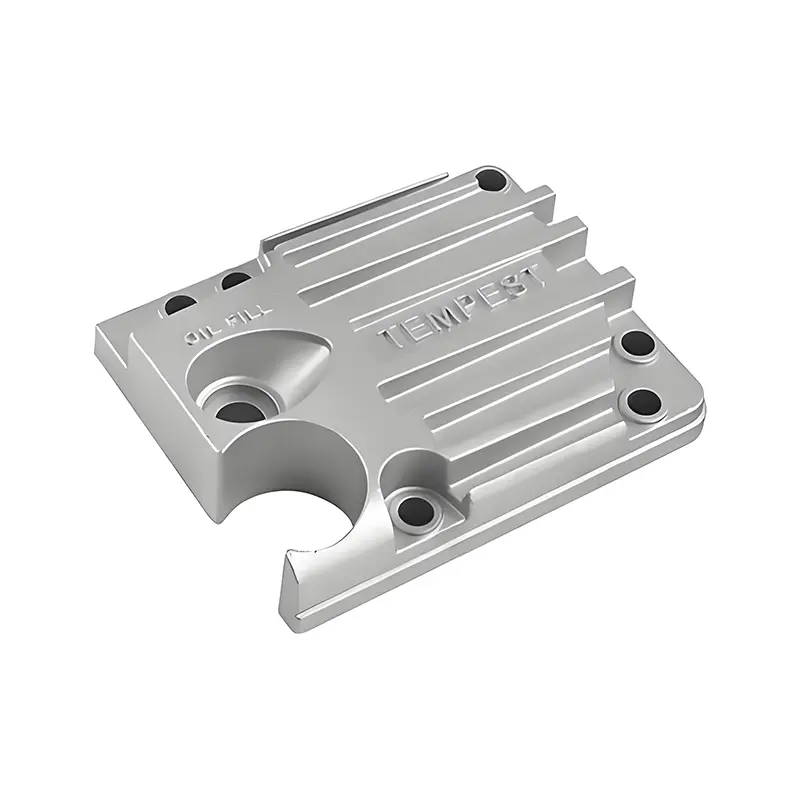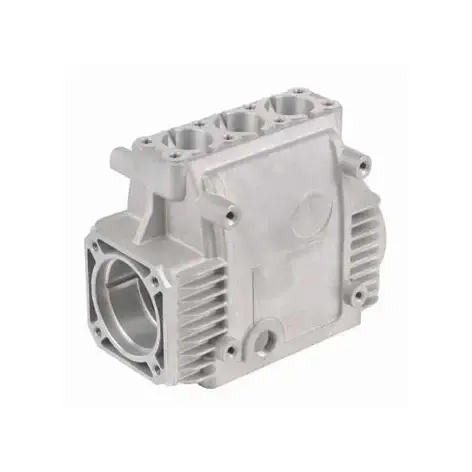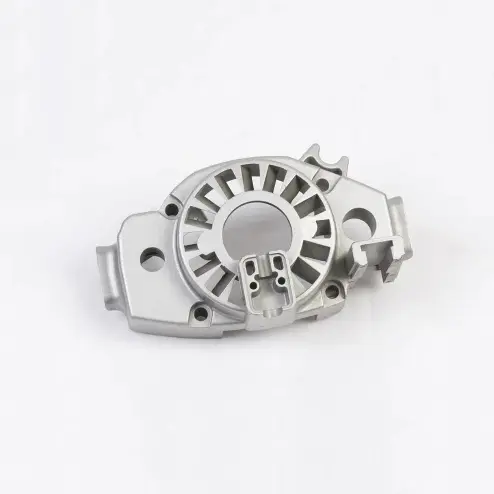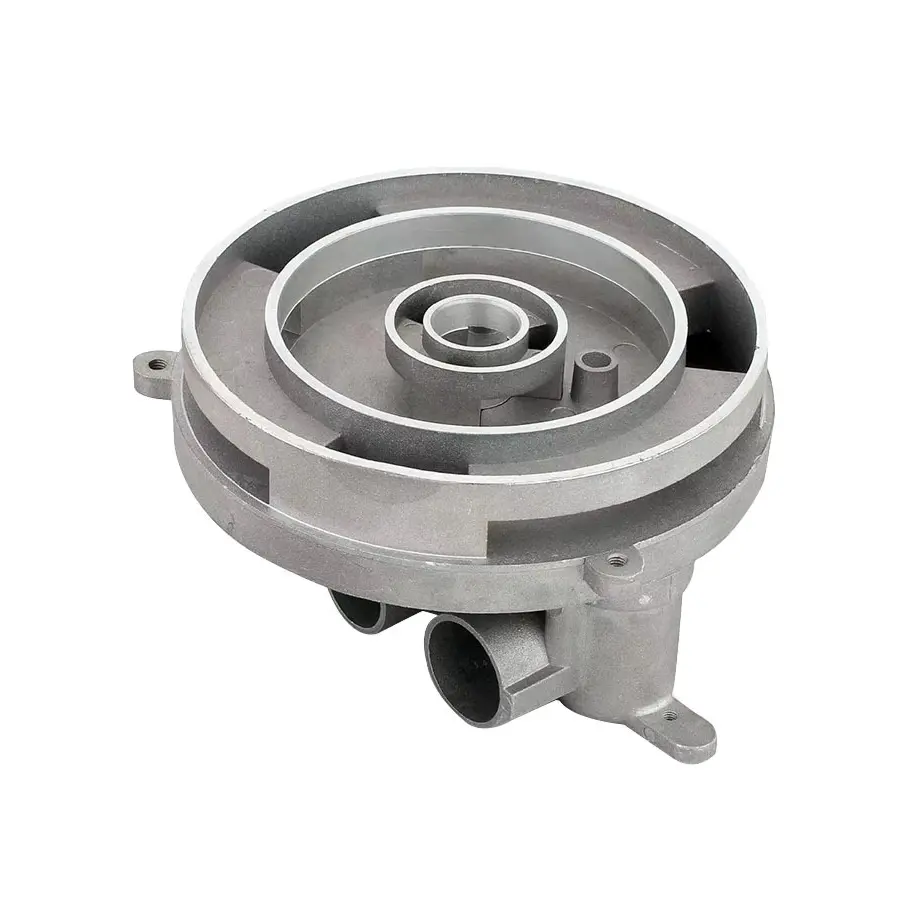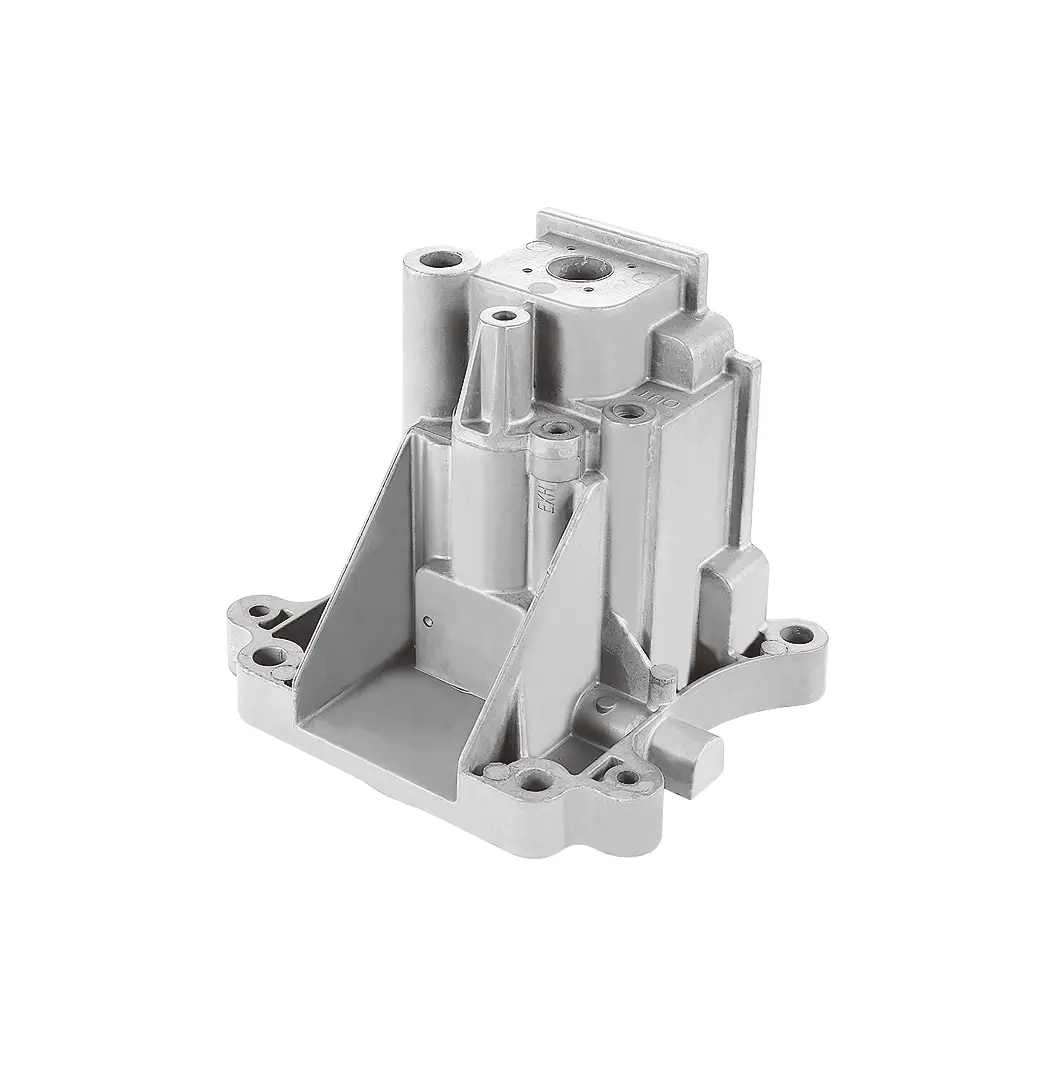 +86-13516964051
+86-13516964051 Aluminum Alloy Die Casting Knowledge Summary
Aluminum Alloy Die Casting Knowledge Summary
Among the many manufacturing processes, aluminum alloy die casting, with its core advantages of high efficiency, high precision, and low cost, has become an indispensable key technology in the automotive, electronics, home appliance, and new energy sectors. From automobile transmission housings to mobile phone midframes, from new energy vehicle motor end caps to smart home accessories, aluminum alloy die castings have permeated every aspect of production and life. This article systematically reviews the core knowledge of aluminum alloy die casting, covering basic concepts and process principles, material selection, design key points, defect control, and industry trends, providing a comprehensive reference guide for practitioners, buyers, and technology enthusiasts.
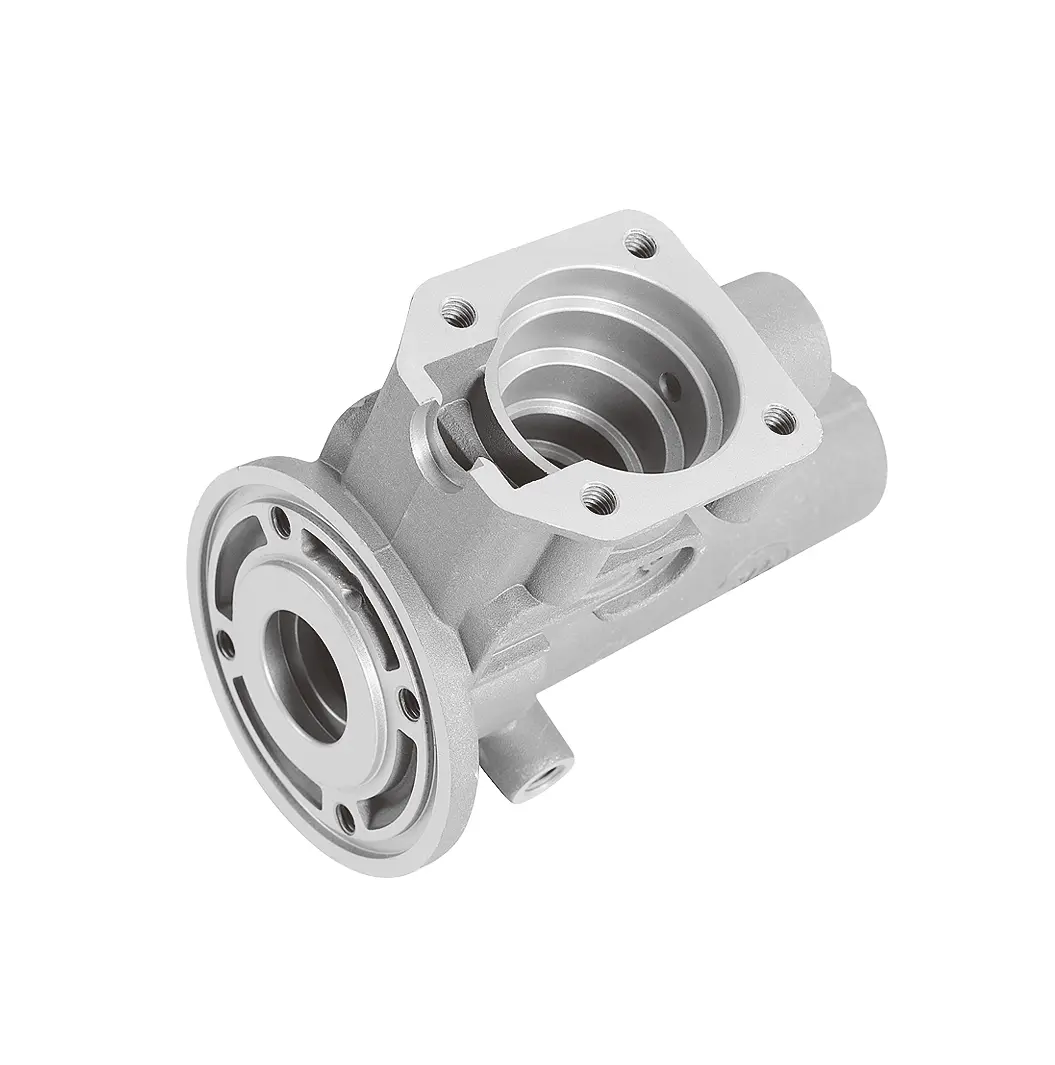
I. Aluminum Alloy Die Casting Basics: Concepts, Principles, and Core Advantages
1. What is Aluminum Alloy Die Casting?
Aluminum alloy die casting is a metal Pressure Casting process in which molten aluminum alloy is filled into a precision metal mold (die casting die) cavity under high pressure and at extremely high speed. After a short period of holding pressure and cooling, the mold is opened to remove the formed casting. Its essence is to achieve rapid shaping of molten metal using high pressure and high speed, combining the advantages of both casting and forging.
Compared to traditional processes such as sand casting and gravity casting, aluminum alloy die casting's core difference lies in its "pressure-driven forming," which also determines its unique value in mass production.
2. Basic Principles and Process of Die Casting
The complete process of aluminum alloy die casting can be summarized as "material preparation → die casting → post-processing → inspection." Each step directly affects the quality of the casting:
Material preparation: This involves the proportioning, smelting, and impurity removal of the aluminum alloy raw materials. The appropriate aluminum alloy grade must be selected based on the casting's performance requirements. The aluminum alloy ingot is melted to 650-720°C in an industrial frequency or medium frequency induction furnace. Refining agents are added to remove impurities such as hydrogen and oxide inclusions to ensure the purity of the molten aluminum.
Die casting: This is the core step and consists of four steps: mold closing, injection molding, pressure holding, and mold opening. During mold closing, the mold tightly closes to form a cavity. The injection cylinder pushes the punch, forcing the molten aluminum into the cavity at high speed (5-15 m/s). During the holding phase, pressure is maintained until the molten aluminum solidifies and forms, preventing shrinkage defects in the casting. Finally, the mold is opened and the casting is removed by the ejector mechanism.
Post-processing: Excessive parts such as gates, risers, and flash are removed from the casting. Some precision castings also require shot blasting, grinding, heat treatment (such as T6 aging), and surface treatment (anodizing, spraying, electrophoresis) to enhance performance and appearance.
Inspection: Qualified products are screened through visual inspection, dimensional measurement (coordinate measuring machine), non-destructive testing (X-ray inspection, ultrasonic testing), and mechanical property testing (tensile strength, hardness testing).
3. Core Advantages of Aluminum Alloy Die Casting
Why has aluminum alloy die casting become the "preferred process" for mass production? Its advantages are primarily reflected in the following five areas:
High production efficiency: The mold is formed in one go, with short single-mold cycle times (a few seconds to a few minutes), enabling continuous automated production and suitable for batch orders exceeding one million parts.
High casting precision: Mold cavity accuracy can reach IT8-IT10, with a surface roughness of Ra1.6-6.3μm. Most castings require minimal or no machining, reducing subsequent costs.
High material utilization: Liquid metal is virtually wasted, and 100% of gates and scrap can be recycled and remelted, keeping raw material costs manageable.
Stable casting performance: High-pressure molding results in dense castings with superior mechanical properties (strength and hardness) compared to sand castings, and with excellent consistency.
Large design freedom: Complex structures (such as thin walls, deep cavities, and irregular holes) can be formed, multiple part functions can be integrated, and assembly steps can be reduced (e.g., integrated die-casting of automotive engine blocks).
II. Aluminum Alloy Die-Casting Materials: Grade Selection and Performance Matching
The properties of aluminum alloys directly determine the application scenarios of die-cast parts. Different grades of aluminum alloys vary significantly in strength, ductility, corrosion resistance, and casting properties. Choosing the right grade is the first step to a successful die-casting project.
1. Classification of Common Aluminum Alloy Die-Casting Grades (According to International Standards)
Currently, the industry generally uses ASTM B85 (American Society for Testing and Materials) or EN 1706 (European Union Standard) to classify die-cast aluminum alloys. Core grades can be divided into the following categories:
Al-Si (aluminum-silicon alloys): The most widely used, accounting for over 80% of all die-cast aluminum alloys, they are characterized by excellent casting properties (high fluidity and low shrinkage) and strong corrosion resistance.
ADC12 (ASTM standard) / AlSi12Cu1 (EN standard): Contains 11-13% silicon and 1.5-3% copper. It has medium strength and good machinability, making it suitable for non-load-bearing parts such as appliance housings, toys, and hardware accessories. A380 (ASTM standard) / AlSi9Cu3 (EN standard): Contains 8-10% silicon and 2.5-3.5% copper. Its strength and hardness surpass ADC12, and its temperature resistance is excellent. It is the preferred choice for automotive parts (such as transmission housings, steering knuckles) and electronic equipment housings. A360 (ASTM standard) / AlSi9Mg (EN standard): Contains 0.17-0.35% magnesium. It offers excellent corrosion resistance and high strength, making it suitable for parts requiring weather resistance (such as water pump housings and valves). Al-Mg alloys (magnesium-aluminum alloys): They offer high strength, good ductility, and strong corrosion resistance, but suffer from poor casting fluidity and are prone to oxide inclusions. They are suitable for structural parts subject to high loads (such as motorcycle frames). Representative grades include ADC5 and ADC6. Al-Zn alloys (zinc-aluminum alloys): They offer excellent low-temperature performance but poor corrosion resistance. They are rarely used, primarily for small parts exposed to low-temperature environments. 2. Core Principles of Grade Selection
When selecting an aluminum alloy grade, consider the three key factors of "application scenario + performance requirements + process feasibility" to avoid blindly pursuing "high performance" while ignoring cost and process compatibility.
Load-bearing requirements: For load-bearing parts such as automotive chassis and new energy battery housings, high-strength grades such as A380 and A360 are preferred. For decorative parts and non-load-bearing housings, ADC12 is an option.
Corrosion resistance requirements: For outdoor equipment and bathroom accessories requiring weather resistance, A360 (containing magnesium) or Al-Mg grades are preferred; indoor parts may require more relaxed requirements.
Heat resistance requirements: For engine peripherals and lighting heat sinks requiring temperatures above 200°C, A380 and A413 (AlSi12) are recommended. For ambient temperature environments, ADC12 is recommended.
Processing difficulty: For complex, thin-walled parts (wall thickness <2mm), grades with good flowability (such as ADC12 and A380) are preferred. Simple, thick-walled parts require lower flowability requirements. Cost Control: The ADC12 is priced lower than the A380 and A360, making it a preferred choice for large-volume, non-load-bearing parts.
III. Aluminum Alloy Die-Casting Dies: Key Elements and Lifespan Management
The die is the core equipment for aluminum alloy die-casting. Its design, material, and machining accuracy directly impact casting quality and production stability. Die costs typically account for 20%-40% of the total die-casting project investment.
1. Basic Structure of the Die-Casting Die
The die-casting die consists of two parts: the "fixed die" (fixed to the fixed platen of the die-casting machine) and the "movable die" (moving with the movable platen). Core components include:
The cavity: The core of the mold, determining the shape and size of the casting. It consists of the core and cavity inserts and must be made of high-strength materials.
The gating system: The channel connecting the shot chamber and the cavity, including the sprue bushing, diverter cone, runner, and ingate. Its design must ensure uniform and rapid filling of the cavity with molten aluminum and minimize air entrapment. Overflow System: This includes venting and overflow channels, designed to remove air, paint residue, and cold aluminum from the mold cavity to prevent porosity and inclusions in the casting.
Ejector System: This consists of ejector pins, ejector tubes, and return pins, and is used to eject the casting from the mold after mold opening. Ejector force must be uniform to prevent deformation.
Cooling System: This system uses circulating water to control the mold temperature (typically maintained at 150-250°C) to ensure rapid solidification of the casting and protect the mold from overheating.
2. Mold Material Selection
Die-casting molds must withstand the erosion and wear of high-temperature, high-pressure, and high-velocity aluminum liquid. Hot-work die steel is commonly used. Core grades include:
H13 (4Cr5MoSiV1): The most widely used, it offers high strength, high toughness, and excellent thermal fatigue resistance. It is suitable for core components such as cavities and cores, with a service life of 50,000-100,000 cycles. SKD61 (Japanese Standard): Performance is similar to H13, with slightly better wear resistance. It is suitable for molds with large production runs and complex castings.
3Cr2W8V: Good heat resistance, but poor toughness. It is suitable for simple molds used in high-temperature environments (such as sprue bushings).
3. Three Key Measures for Mold Life Management
Mold life directly impacts production costs. To extend its life, the following measures should be taken:
Mold Preheating: Preheat the mold to 150-200°C before production to prevent thermal shock cracking caused by sudden contact of the cold mold with hot molten aluminum.
Proper Lubrication: Regularly spray a high-temperature release agent on the mold cavity and ejector system to reduce adhesion of the molten aluminum to the mold, while also providing cooling and preventing rust.
Regular Maintenance: During production, regularly inspect the mold for wear and deformation, promptly polish the cavity, and replace wearing parts (such as the ejector pin and sprue bushing) to prevent minor defects from escalating.
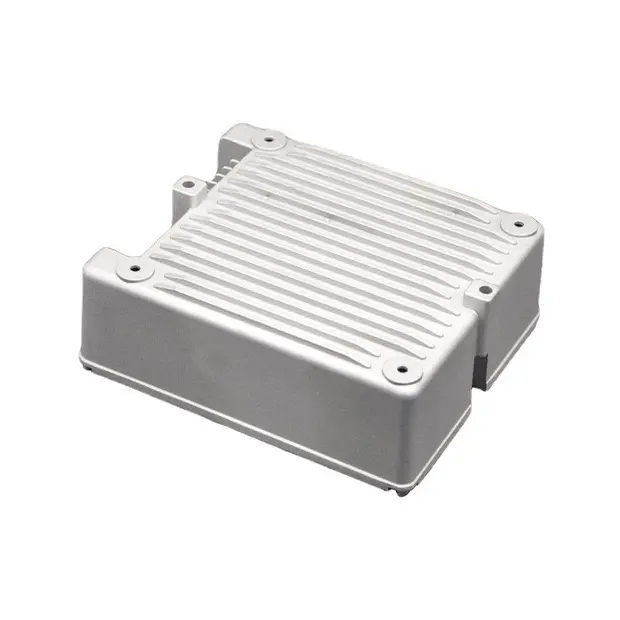
IV. Aluminum Alloy Die-Casting Design: From "Producibility" to "Optimal Production"
Die-casting design must not only meet product functional requirements but also adapt to the characteristics of the die-casting process. "Process-friendly design" can significantly reduce mold costs, minimize defects, and improve production efficiency. The following are key design considerations:
1. Wall Thickness Design: Uniform and Reasonable Wall Thickness is Key
Wall thickness is the primary element of die-casting design. Improper wall thickness can lead to defects such as porosity, shrinkage, and deformation.
Uniform wall thickness: Avoid areas that are excessively thick or thin. The thickness difference should not exceed 1:3. Excessive thickness can easily lead to shrinkage (volume contraction of the molten aluminum during solidification); excessive thinness can make filling difficult and lead to material shortages.
Rational Range: Common wall thicknesses for aluminum alloy die-castings are 1.5-5mm, while thinner wall thicknesses of 0.8-1.2mm are possible (requiring high-flow aluminum alloys and high-precision molds).
Smooth transitions: Use rounded corners or beveled surfaces at changes in wall thickness to avoid sudden right-angle transitions and reduce stress concentration. 2. Structural Design: Simplify Molds to Improve Formability
Avoid deep cavities and blind holes: Deep cavities (depth > 3 times the diameter) increase the difficulty of core processing and can easily lead to insufficient molten aluminum filling. A 0.5-1mm venting space should be reserved at the bottom of blind holes.
Reduce core pulling mechanisms: Complex side holes and undercuts require core pulling mechanisms, which increases mold cost and the risk of failure. When designing, consider converting side holes to through holes or integrating the structure to reduce the number of core pulling mechanisms.
Adding Ribs: Adding ribs (width 0.6-0.8 times the wall thickness, height 3-5 times the wall thickness) to thin-walled parts or stress-bearing areas can increase strength without increasing overall wall thickness.
Rim Design: All corners of the casting should be rounded (radius 0.5-5mm). This improves the flow of molten aluminum while reducing mold wear and stress concentration in the casting. 3. Gating and Overflow Design: Cooperate with Mold Optimization
Although the mold designer leads the gating system, the product design must reserve space for it:
Gate Location: Avoid placing the gate on the exterior or critical stress-bearing surfaces. Leave a cutout margin (usually 3-5mm) at the gate.
Vent Location: Reserve venting slots in the last areas of the casting (such as deep cavities and corners) to ensure smooth evacuation of air from the cavity.
V. Common Defects and Solutions for Aluminum Alloy Die Castings
Even with sound processes and designs, defects may still occur during production. Promptly identifying the cause of the defect and taking corrective action is crucial to ensuring product quality. The following are the six most common defects and their solutions:
1. Porosity: Holes (0.1-2mm in diameter) inside or on the surface of the casting
Causes: Excessive hydrogen content in the molten aluminum; poor cavity venting; excessive injection speed leading to air entrainment; and low mold temperature. Solution: Add refining agents during smelting to remove hydrogen; add venting grooves or enlarge vent holes; reduce the injection speed (especially during the initial filling phase); increase the mold preheat temperature.
2. Shrinkage/Porosity: Irregular holes within the casting (mostly located in thick walls).
Causes: Insufficient holding pressure or short holding time; lack of overflow channels in thick walls; improper solidification sequence of the molten aluminum.
Solution: Increase the holding pressure and hold time; add overflow channels in thick walls; optimize the mold cooling system to control the solidification sequence (thin walls solidify first, thick walls later).
3. Underfill (Under-Gush): Incomplete casting shape, with areas not filled.
Causes: Poor molten aluminum fluidity (inappropriate grade or too low temperature); insufficient injection pressure; excessively narrow gates or runners; foreign matter blocking the mold cavity. Solution: Replace a high-fluidity aluminum alloy (such as ADC12); increase the molten aluminum temperature (not exceeding 720°C to avoid oxidation); increase the injection pressure or gate size; and regularly clean the mold cavity.
4. Burrs: Excess metal flakes on the edge of the casting.
Causes: Insufficient mold clamping force or mold wear resulting in excessive clearance; excessive injection pressure; or foreign matter on the mold parting surface.
Solution: Adjust the die-casting machine clamping force; repair the mold parting surface and replace worn parts; clean foreign matter on the parting surface; and appropriately reduce the injection pressure.
5. Deformation: The shape of the casting deviates from the designed dimensions after cooling.
Causes: Uneven wall thickness leading to uneven shrinkage; uneven force on the ejector mechanism; or improper heat treatment process.
Solution: Optimize the wall thickness design to ensure uniformity; adjust the ejector pin position to ensure symmetrical ejection force; and optimize heat treatment parameters (e.g., controlling the heating rate during T6 aging). 6. Inclusions: Non-metallic impurities (such as scale and paint residue) inside or on the surface of the casting.
Causes: Incomplete removal of impurities during molten aluminum smelting; improperly designed pouring system leading to scale inclusion; excessive or insufficiently dried mold coating.
Solutions: Enhance smelting impurity removal (e.g., static dehydrogenation and filtration); optimize the pouring system and install slag retainers; control the amount of paint sprayed, ensuring it dries before closing the mold.
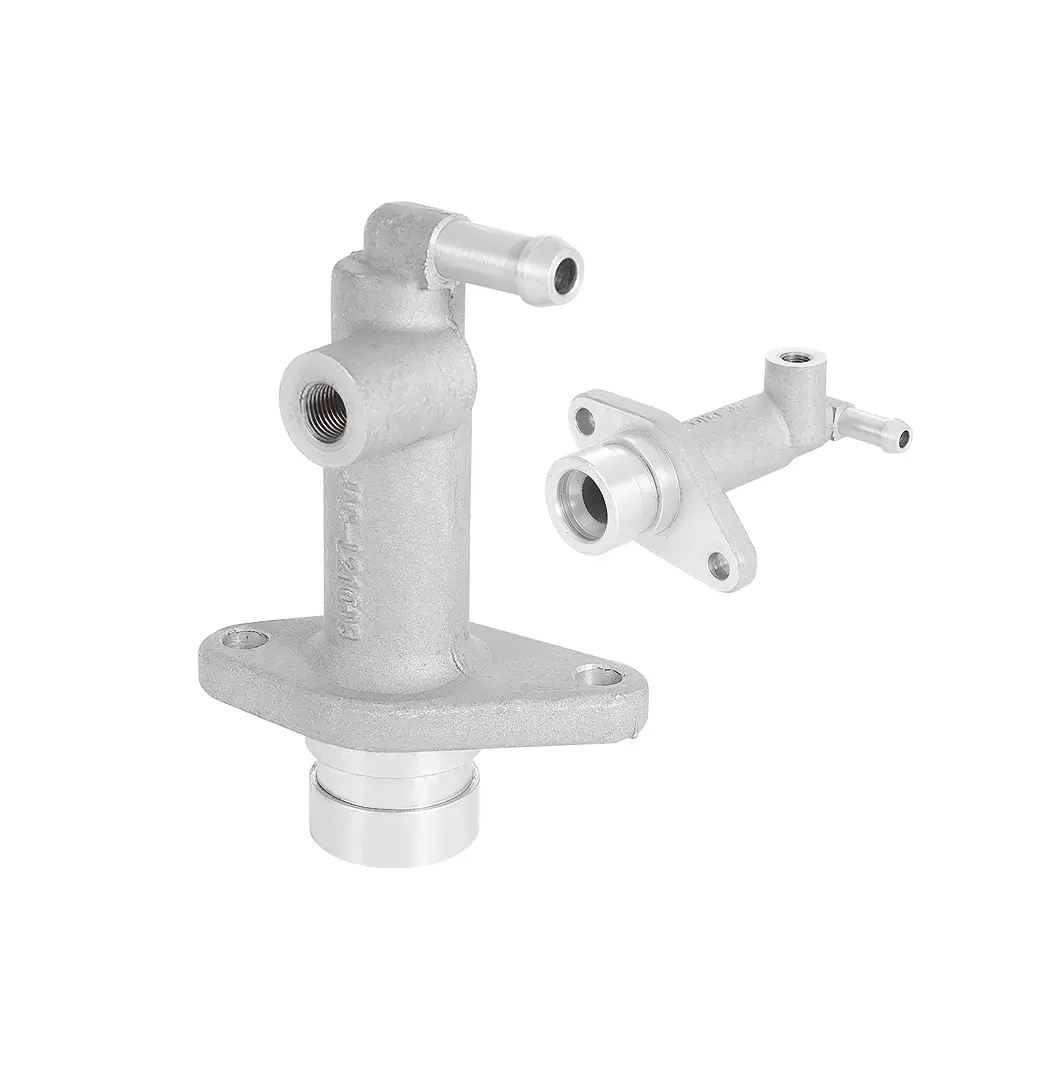
VI. Trends in the Aluminum Alloy Die-Casting Industry: Intelligence, Integration, and Greening
Driven by manufacturing upgrades and the wave of new energy and intelligent technologies, the aluminum alloy die-casting industry is developing in three major directions:
1. Intelligent Production: From "Manual Operation" to "Unmanned Workshops"
Increasing Popularity of Automated Equipment: Die-casting machines are integrated with robots, conveyor belts, and testing equipment to automate the entire process from "part collection - degating - testing - sorting," reducing labor costs and improving reliability. Digital Management: The MES (Manufacturing Execution System) system monitors die-casting parameters such as temperature, pressure, and cycle time in real time, records production data, and enables quality traceability and process optimization.
AI-Assisted Decision-Making: Leveraging AI algorithms to analyze production data, predict mold life, identify potential defects, and proactively adjust process parameters (such as adaptive injection speed).
2. Integrated Die Casting: "Part Integration" Reduces Costs
The Rise of Large Integrated Castings: Traditional car bodies are welded together from hundreds of stamped parts. Companies like Tesla are using "large integrated die casting" technology to integrate multiple parts into a single unit.
Die-cast parts (such as rear floor assemblies) reduce welding steps by over 30% and reduce vehicle weight by 10%-15%.
Ultra-large die-casting machine applications: To achieve integrated die-casting, the clamping force of die-casting machines has been increased from the traditional 1,000-4,000 tons to 6,000-12,000 tons, placing higher demands on mold materials and machining precision.
3. Green Production: Responding to environmental protection policies
Energy conservation and emission reduction: Medium-frequency induction furnaces (20% more energy-efficient than industrial-frequency furnaces) and waste heat recovery systems are used to reduce energy consumption; water-based mold release agents are promoted to reduce VOC emissions.
Circular economy: 100% of die-casting waste (gatings, rejects) is recycled and remelted, and recycled aluminum purification technology is used to reduce primary aluminum consumption (recycled aluminum consumes 95% less energy per ton than primary aluminum).
Environmental certification: An increasing number of companies have achieved ISO 14001 environmental management system certification, meeting the environmental requirements of downstream customers (such as the automotive and electronics industries). 7. Five Practical Tips for Purchasing and Selecting Aluminum Alloy Die-Castings
For buyers, choosing the right die-casting supplier and product requires avoiding the misconception of "only considering price" and focusing on the following five key points:
Review supplier qualifications: Check business licenses, production licenses, and certifications such as IATF 16949 (Automotive Industry Quality System). Conduct on-site inspections of production equipment (die-casting machine tonnage, testing equipment) and production capacity.
Clear technical requirements: Specify the aluminum alloy grade, mechanical properties (tensile strength, hardness), dimensional tolerances (e.g., GB/T 1804), surface treatment methods, and testing standards (e.g., X-ray inspection level) in the purchase contract to avoid vague terms.
Emphasis on sample verification: Request suppliers to provide small batches of samples first. Verify performance and dimensions through a third-party testing agency. Only after passing the test can mass production commence.
Communicate cost structure: Understand the supplier's quote components (raw materials, molds, processing, labor, and profit margins) to avoid cutting corners due to price competition (e.g., substituting ADC12 for A380). Long-term partnership perspective: Prioritize suppliers with R&D capabilities, who can help optimize product design and reduce costs while ensuring the stability of subsequent orders and after-sales service.








